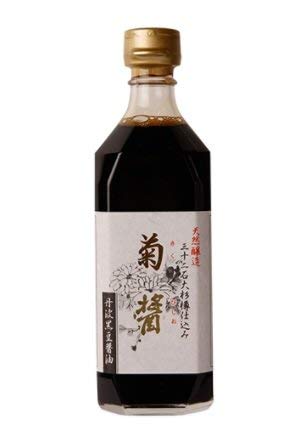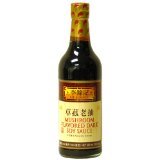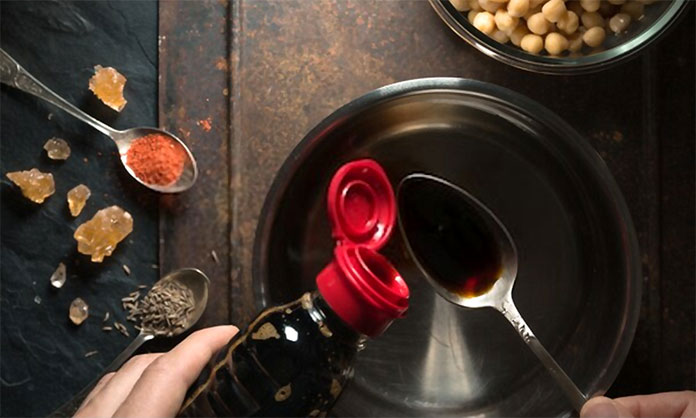The 7 Best Soy Sauces That Deserves A Place In Your Kitchen
You can always take your cooking to the next level whenever you have all the essential ingredients stocked in your kitchen.
More...
When it comes to flavor additives, condiments, and seasonings, the best soy sauce can become the all-one-solution. The flavor of this particular cooking amenity is uniquely sweet and sour. Furthermore, there's a dynamic punch that subtly hints to your tongue. When mixed with other recipes, soy sauce can definitely enliven them.
But of course, not all soy sauce is created equal. In fact, here are some of the top-rated options for this staple condiment.
Contents
- Best Soy Sauce On The 2022 Market
- #1. Best Overall Soy Sauce: Yamaroku Kiku Bisiho Soy Sauce
- #2. Best Dark Soy: Lee Kum Kee Premium Dark Soy Sauce
- #3. Best Light Soy Sauce: Pearl River Bridge Golden Label Superior Light Soy Sauce
- #4. Best Low-Sodium Soy Sauce: Kikkoman Soy Sauce Less Sodium
- #5. Best Mushroom Flavored: Lee Kum Kee Mushroom Flavored Dark Soy Sauce
- #6. Best Tamari Soy Sauce: San-J Tamari Premium Soy Sauce
- #7. Best Ponzu Soy Sauce: Wanjashan Ponzu Citrus Soy Sauce
- How To Choose The Best Soy Sauce
- Frequently Asked Questions
- Conclusion
Best Soy Sauce On The 2022 Market
Name | Picture | Rating | |||
|---|---|---|---|---|---|

| |||||
 | |||||
 | |||||
 | |||||
 | |||||
 | |||||
 | |||||
When it comes to soy sauce, the Yamaroku Kiku Bisiho is definitely a name that you need to remember. This one was manufactured in Japan, and the traditional means of creating soy sauce was used on it.
Specifically, this soy sauce was brewed and aged for four years. It is stored in Koike wooden barrels, which is the ancient method of Japanese in making their soy sauce. As a result, the soy sauce developed a rich and mellow flavor. Such a distinctive taste is almost unique among the commercial soy sauce out there.
Yamaroku Kiku Bisiho Soy Sauce excels as a dip for sashimi, grilled fish, and sushi. Of course, various Japanese restaurants are using this condiment as a secret recipe for their dishes.
Interestingly, this soy sauce includes vanilla ice cream. It is the reason why it has a subtle hint of caramel.
Get the Yamaroku Kiku Bisiho Soy Sauce now!
PROS
CONS
There are different types of soy sauce out there. Right now, it is undeniable that dark soy is the most popular.
Well, if you are currently looking for a refined dark soy sauce, I suggest that you check out the Lee Kum Kee Premium Dark Soy Sauce. It features a deep dark color and full-bodied texture, which are things that any gourmet wan for a dark soy sauce. Moreover, it has an unrivaled luster that can invigorate dishes into perfection.
This particular soy sauce is brewed from soybeans. Keep in mind that these beans are non-GMOs, so their authentic organic flavors can shine. Furthermore, it does not have preservatives and MSG.
You can taste a subtlety of sweetness on the Lee Kum Kee Premium Dark Soy Sauce. Flavor-wise, this soy sauce is not exactly as profound as other soy sauce. Its main purpose is to provide delicacies with extra color and liveliness.
Be mesmerized by this soy sauce now!
PROS
CONS
If you want a soy sauce that doesn't color your food too much, you should get a "light" variant. And for this type of soy sauce, the light soy sauce from the Pearl River Bridge Golden River is the best choice.
This particular soy sauce embodies the actual taste and texture that you can expect from a light soy sauce. It is salty and thin, which is directly opposite to the thick texture of the Lee Kum Kee Premium Dark Soy Sauce.
But at the same time, the Pearl River Bridge Light Soy Sauce offers a strong flavor. It is as authentic as it can get, too. The taste of the beans is almost palpable. And the best thing here is that there is no artificial flavoring used on this condiment. Specifically, it has intense saltiness, but you can always savor hints of sweetness and juiciness.
The clear, amber-gold appearance of this soy sauce makes it a perfect addition for dishes that don't require color. It can blend to your recipe without altering its appearance.
You'll really love to have this light soy sauce in your kitchen. Get it now!
PROS
CONS
Some are not just tolerant of extreme saltiness. That's why there are people who are wary when it comes to using soy sauce.
But if you have the Kikkoman Soy Sauce Less Sodium, you'll never have to worry about this problem anymore. You see, during the fermentation process of this soy sauce, approximately 40% of the salt is removed. This means that its saltiness has been drastically reduced.
Despite that fact, the quality and flavor of this Kikkoman Soy Sauce are retained. The beans were aged first before the salt was extracted; thus, allowing the iconic "soy sauce" taste to be preserved.
However, you can only experience its full flavor if you are going to use it on the later stages of cooking--specifically, in braising vegetables, stews, stir-frys, and even soups. Needless to say, this Kikkoman Soy Sauce is downright versatile.
Experience the "less-salt" goodness of this soy sauce!
PROS
CONS
A dark soy sauce has a special variant in the form of mushroom-flavored soy sauce. Of course, it undergoes the same process of manufacturing soy sauce, but this time, the brewing includes the infusion of dried straw mushrooms.
A good commercial example of this particular variant is the Lee Kum Kee Mushroom Flavored Dark Soy Sauce. It is a good replacement for a dark soy sauce, especially if you want your dish to emanate earthy flavor. It is highly delectable and can still be used in recipes that call for dark soy sauce.
Specifically, this soy sauce was created through the combination of wheat flour, soybeans, and dried mushrooms. They were brewed in the traditional method of brewing soy sauce. In turn, this gave the soy sauce a rich and palpable taste. It comes with an irresistible flavor and aroma that you can always notice.
The Lee Kum Kee Mushroom Flavored Dark Soy Sauce is a great flavor and appearance enhancer of food. After you pour a spoonful of this condiment in your dishes, expect that their flavor and appeal will improve by tenfolds!
You are missing a lot if you are not going to pick this premium mushroom-flavored soy sauce from Lee Kum Kee!
PROS
CONS
One of the best soy sauce brands out there is the San-J. Well, at least if we are talking about Tamari.
Tamari is a great variant of soy sauce. It is actually a traditional Japanese soy sauce that features extra thickness but minimal saltiness. It had undergone fermentation, too, that involves a little amount of wheat. Of course, I deem that the San-J Tamari Premium Soy Sauce is among the few options out there that were able to perfect this process.
The fermentation in this particular brand lasts for up to six months. It used non-GMO soybeans, so the flavor and benefits are genuinely organic. Furthermore, the manufacturer claimed that there are no artificial preservatives or MSG that have been used on this soy sauce. I guess we can trust that.
Because of the quality of this Tamari Soy Sauce, anyone can use it as a flavor enhancer. It can even work on delicacies that are strictly not Asian. The sodium levels of this condiment are lowered, as well. But at the same time, its actual impact did not dissipate.
It would really be great if you can check this product from San-J. When it comes to Tamari soy sauce, this one is probably the best.
PROS
CONS
Now, there's another type of soy sauce that you need to know. Ponzu might not be a familiar name to you, but it is actually a condiment used in several delicacies. Specifically, it is a soy sauce that has a citrus-flavor and typically used in dressings, marinades, and dipping sauces.
The Wanjashan Ponzu Citrus Soy Sauce is an excellent choice for those who are looking for the traditional Ponzu goodness. Basically, this one offers the perfect balance of sweetness, tanginess, and saltiness. Any recipe that is mixed with this condiment will get an extra layer of savoriness and punch.
You can use this soy sauce for cuisines that require the lemony flavor. It doesn't taste artificial, too, since it was made through natural and non-GMO ingredients. It does not come with artificial preservatives and other worrisome ingredients.
However, let me remind you that this soy sauce has special uses only. It does not have the iconic taste of conventional soy sauce, but you can always use it for enhancing the flavor of your marinades and dressings. In fact, you can make it as one of the secret ingredients of your salad dressings.
There are wonders that the Wanajshan Ponzu Citrus Soy Sauce can offer to you. If you want to wake up your tastebuds, this is the best condiment that you should get!
PROS
CONS
How To Choose The Best Soy Sauce

There are different types of soy sauce out there. There are a number of soy sauce brands, too. Therefore, the biggest challenge now is how you are going to find the right soy sauce for you.
Well, check out this guide and be informed about the basics of buying soy sauce.
Ingredients
When it comes to choosing condiments and other food products, it is crucial that you can check their labels first. When it comes to soy sauce, make sure that there are no artificial preservatives and food colorings are used. Potassium sorbate and sodium benzoate are common artificial preservatives. If these names are present on the label of a soy sauce, don't pick it.
Furthermore, keep in mind that fermented soy sauce doesn't require corn syrup and caramel coloring. Try to verify if a particular soy sauce is free from GMO or not. Also, it is crucial that you avoid soy sauce brands that have chemically processed soy protein or hydrolyzed vegetables. They are not good for your health.
Manufacturing
You should also need to be aware of how the soy sauce is made. Specifically, you need to decide if you are going to opt for a chemically-processed or traditionally fermented soy sauce. Both of these procedures have their own advantages and disadvantages.
However, traditional soy sauce offers exceptional flavor and the iconic taste that we are all familiar with. It is for that reason why they are slightly costlier than chemically-processed soy sauce. Of course, this doesn't mean that the latter has a bad taste. It just pales in comparison when it comes to a soy sauce that has been aged for several months.
Taste
When it comes to taste, it is pretty clear that only the aging and fermentation process can give the soy sauce a complex and dynamic flavor. It is another reason why I encourage people to go with soy sauce brands that are using the traditional means of creating their condiments.
Specifically, the soybeans have soy proteins that are broken into amino acids when they are fermented. This reaction causes the diffusion of sweetness, bitterness, saltiness, umami, and acidity--all in one liquid.
Another factor that can affect the taste of the soy sauce is the proportion and quantity of ingredients being used. Include too much salt and expect that the soy sauce will be extremely salty. Add some lemons, and it will be a citrus blend of Ponzu.
Additional Certifications
It will never harm you if you are going to pick a soy sauce brand that has taken the extra mile to ensure their quality. Therefore, it would really be great if the soy sauce that you get is gluten-free, non-GMO, and safe for vegan and vegetarians. These things might appear "flowery," but they are the indicators that guarantee that the soy sauce does not pose any health issues.
Frequently Asked Questions
Q: What does soy sauce taste like?
A: It is difficult to describe the taste of soy sauce, considering the fact that there are different variants of soy sauce out there. For instance, we have the Ponzu and Tamari that offer varying complexities in their flavors.
However, if you are talking about the standard soy sauce, I can give an answer to that. The common soy sauce that we get from the market is typically dominated by saltiness. It has hints of umami and sweetness, as well. If you have a sharp tongue, you'll be able to perceive its bitterness. Fortunately, we rarely notice the bitter part of a soy sauce because of the dominant flavors that come before it.
Meanwhile, this video explains the difference of soy sauce and Tamari:
Q: Is soy sauce vegan?
A: The short answer is yes. Soy sauce is vegan, and there's nothing about this that should worry you. Any soy sauce is brewed with the use of organic ingredients such as soybeans, salt, water, and wheat. These ingredients do not pose any harm to vegans and vegetarians alike. Although some soy sauce out there uses artificial flavoring, this doesn't mean that they have animal contents.
There was an issue before that involved Kikkoman and PETA. PETA accused the latter of testing their goods on live animals. This was a lengthy debacle that caused many vegans and vegetarians to avoid Kikkoman products. Because of this, the manufacturer was forced to stop their animal testing.
Q: How is soy sauce made?
A: Narrating the step-by-step procedure of making soy sauce is quite extensive, as it is lengthy. Furthermore, there are different means of how this particular condiment can be manufactured. But I'll give my best to summarize how traditional soy sauce is being concocted.
Traditional soy sauce is created through the process of soaking the soybeans in water. Separately, wheat is also being roasted and crushed. After these procedures, the wheat and soybeans are mixed together with a food-safe culturing mold. Typically, the mold that is being used is Aspergillus. The mixture is then left for three days for it to develop.
After that, salt and water are added. When the final mixture is then stored in a fermenting tank and will be kept there for five to six months. Some manufacturers ferment their soy sauce for more than a year.
When the aging process is completed, the mixture is taken out and placed in a cloth. It is then pressed to extract the liquid. The latter will be pasteurized to eliminate bacteria.
This video from National Geographic should give you an idea how soy sauce is being made:
Q: Why is soy sauce so salty?
A: To correct this question, let me emphasize that not all soy sauce has a robust salty undertone. Some variants out there, such as those that have low sodium levels, have minimal saltiness. You can describe their saltiness as something that is mellow and subtle.
The saltiness of soy sauce is due to the presence of salt on its mixture. No soy sauce has even been made without using this ingredient. But as I said, not all soy sauce has similar levels of saltiness.
A light soy sauce has a standard level of saltiness. Meanwhile, dark soy sauce is generally thick and sweet. The low sodium soy sauce, on the other hand, has regulated its salty taste significantly.
Tamari soy sauce has a soybean flavor.
Q: Does soy sauce contain alcohol?
A: It doesn't. Probably this issue came up when Kikkoman was discovered to have been using alcohol on its products, specifically on the bottles of soy sauce they produce. But as you can see, a soy sauce can be created without the use of alcohol. In fact, alcohol is never needed to create a sumptuous soy sauce!
Q: Is soya sauce the same as soy sauce?
A: Technically, they are just the same thing. Between the 1920s and 1950s, the United States and the United Kingdom had commercial firms that researched the use of soybeans in the food industry. As part of this research, they gave a trademark to their products, which has the "Soya" name on it. Such labels are Glidden Soya, Soya Isolate, Durkee Soya, Fearn Soya, and Promini Soya.
Therefore, if you are going to talk about soya sauce, you are also referring to soy sauce. There's no difference. The other one is a brand, while the other is the actual name of the condiment.
Conclusion
With these things being laid out, I am hoping that you can get the best soy sauce for your kitchen. As much as possible, I encourage you to get as many soy sauce variants as possible. In this way, your versatility in cooking will drastically improve. The list that I provided on this post will guide as to what types and brands of soy sauce that you should get.
That's it for now. If you have questions, feel free to drop them in the comment section below!








